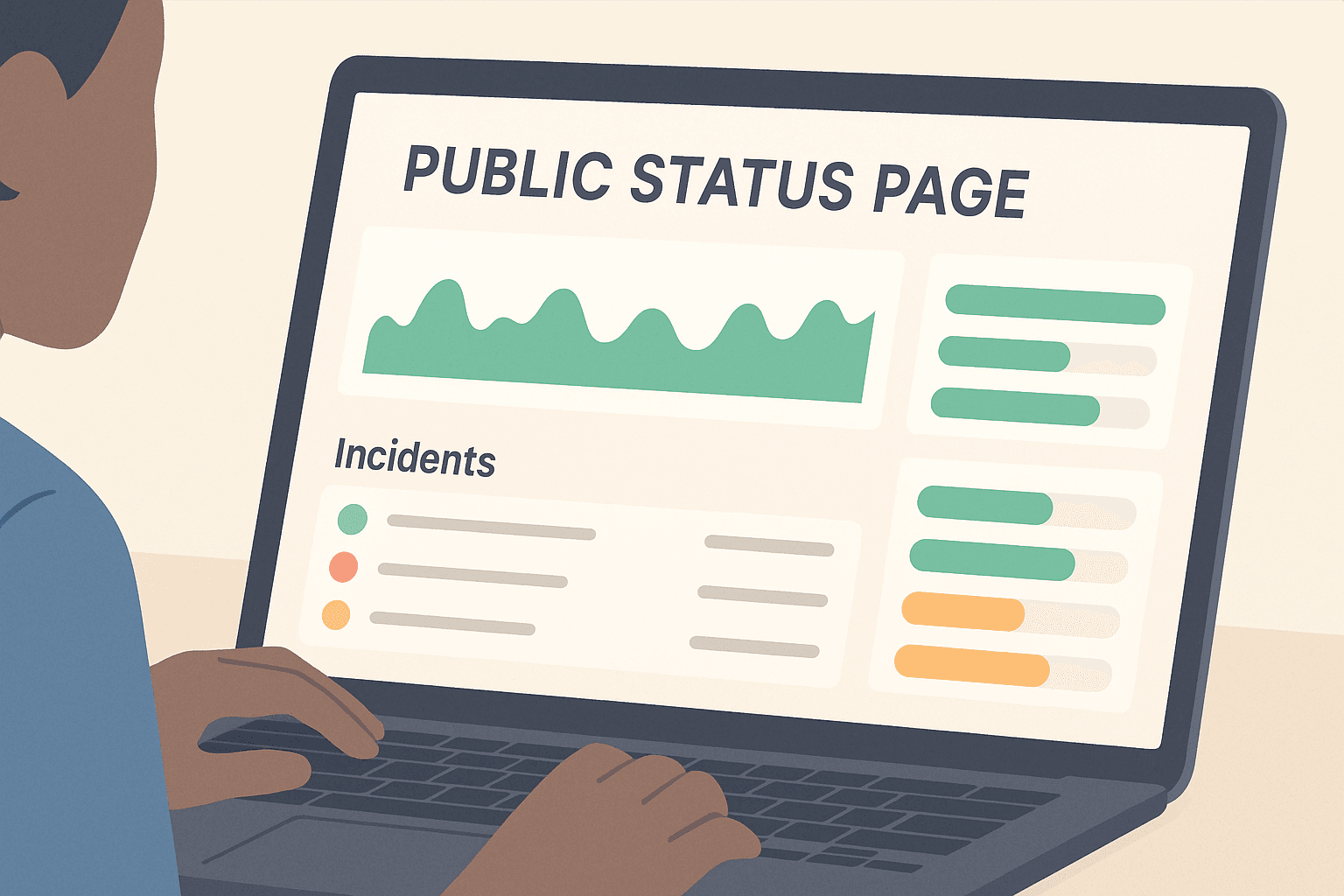
Why Every SaaS Needs a Status Page
- Published On: July 29, 2025
- Category: Status Page
- Read Time: 4 min
In today’s fast-paced digital world, users expect transparency and reliability. A public status page is no longer a luxury — it’s a must-have for every SaaS product that takes trust seriously.
Trust is the currency of SaaS. And in the eyes of your users, transparency builds that trust — especially when things go wrong. That’s why having a public status page isn’t just “nice to have” anymore. It’s foundational.
What Is a Status Page?
A status page is a public-facing dashboard where users can check the current operational state of your product or services. It usually includes uptime history, ongoing incidents, maintenance windows, and performance metrics.
Think of it as your digital “weather report” — open, accessible, and up to date.

Why SaaS Products Need One
Most SaaS companies rely on uptime to deliver value. When downtime happens — and it will — your users don’t just want to know what’s broken. They want to know that you know and that you care.
- Instant Transparency: Keep your users informed without flooding support channels.
- Reduced Support Load: Cut down on duplicate tickets when users can see live updates.
- Proactive Communication: Notify users before they notice issues on their own.
- Historical Insight: Show your long-term reliability with past incident data.
Real-World Benefits
Companies with public status pages consistently report higher user satisfaction during incidents. Instead of frustration and assumptions, there’s clarity and trust. A status page shows your commitment to accountability.
Plus, if you’re selling to developers, IT teams, or enterprises — they expect it.
Watchman Tower’s Status Page Feature
With Watchman Tower, creating and managing a status page is easy. Customize your branding, select the checks to display, and let our monitoring system update it automatically. Whether it’s uptime, response time, or incidents — it’s all in one place.
You can even host it on your own domain (e.g., status.yourcompany.com).
Conclusion
Your users don’t need perfection — they need communication. A status page gives them peace of mind, even during chaos.
In SaaS, silence during an outage is the loudest failure. A status page speaks when your product can’t.
Free plan available. No credit card needed.
FAQ
Blog Posts
What Is a Public Status Page? Purpose, Benefits, and Best Practices...
A public status page isn’t just about uptime — it’s about transparency, trust, and better communication. In this guide, you’ll learn exactly what a public status page is, why it matters for your business, and how to make it a tool your users will value.
Learn more about What Is a Public Status Page? Purpose, Benefits, and Best Practices

